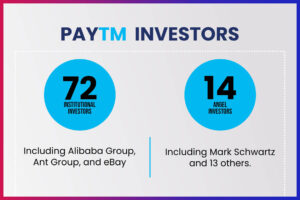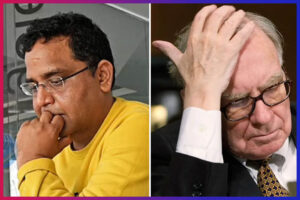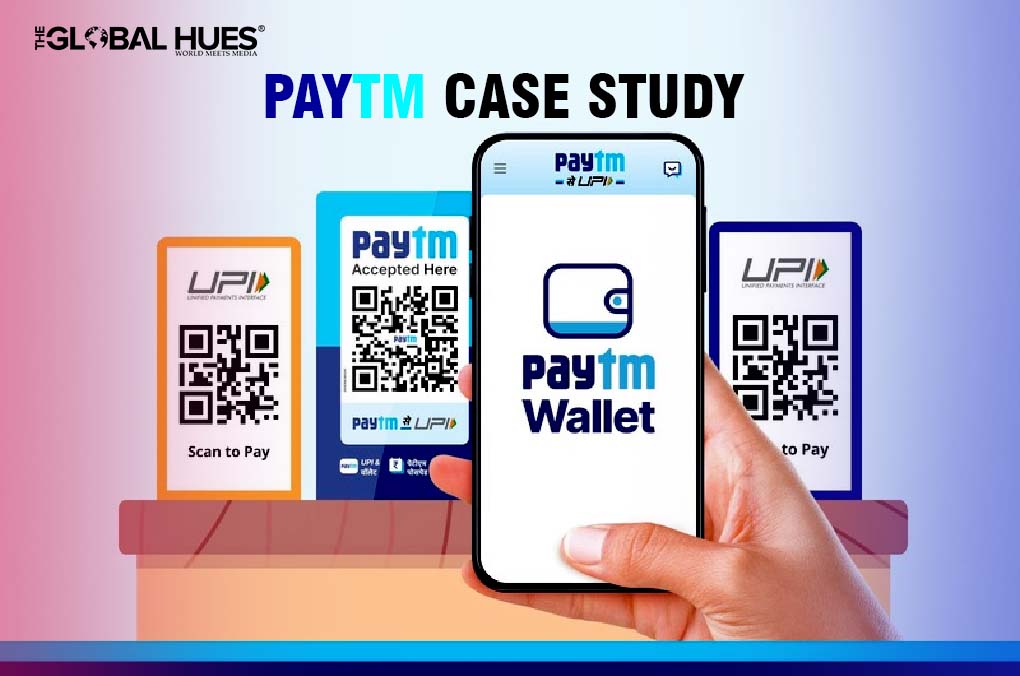Discover:
-
How did Paytm’s story evolve from initial struggles to becoming a major player in India’s digital payments?
-
Explore what sets Paytm apart, from its innovative business model and strategic partnerships to its global ambitions.
-
What are the future plans of Paytm?
Paytm is one of the key players in the country’s digital ecosystem and has a user base of over 300 million. It is a medium for digital transactions at more than 20 million retailers. Paytm offers payments, cell phone recharges, smooth money transfers, and hassle-free movie and travel ticket booking. Furthermore, it is a digital conduit for digital transactions at over 20 million merchants.
The company has changed how businesses handle transactions with creative solutions such as the All-In-One PG, All-In-One POS, and QR Code. These improve the overall efficiency of both customers and businesses. Paytm is a driver of growth and success in the field of digital business, with its dedication to offering a simple and convenient payment network. Currently, Paytm ranks 4th in Product quality score.
What led to the inception of Paytm?
In college, Vijay Shekhar Sharma developed an interest in entrepreneurship. He was quite fascinated with Yahoo, an American search engine. The platform ignited his passion for entrepreneurship. He wanted to study at Stanford University but couldn’t due to a lack of money and average English language skills.
He learnt to code all by himself and created a CMS (content management company) named XS Communications with his friends. Many renowned publications, including The Indian Express, used their CMS. Vijay founded One97 Communications, the parent company of Paytm, in 2000. Initially, his company offered ringtones, Bollywood movie songs, and search services before foraying into digital payments.
When he pitched the idea of entering the payment ecosystem in front of the board members, it was rejected. To convince them, he put 1% of his equity, which is about $ 2 million and said, “If I waste the company’s money that we put on site, this is all of you.”
Paytm, known as“Pay Through Mobile,” was launched in 2010 to provide financial and digital services. It also provides users with Paytm Payments bank that helps them enjoy transparent and risk-free banking, a virtual debit card, no minimum balance limitations, and speedy account opening. Paytm has expanded its offerings to include stockbroking, the National Pension System (NPS), Paytm First Games, Paytm Insurance, and a mini app store.
The Growth of Paytm
Paytm’s success can be attributed to Vijay Sharma’s strategic viewpoint and commitment to delivering necessary services. By providing digital wallets and 24/7 customer support, Paytm developed a foundation of trust with its customers.
The rapid growth of Paytm drew in Global business tycoon Warren Buffett, and in August 2018, Berkshire Hathaway made a significant $300 million investment in the company. This strategic partnership enhanced Paytm’s position as a prominent participant in the fintech sector. After the success of Paytm, Vijay extended his business empire by launching the Paytm Payments Bank and Paytm Mall and reinventing digital payments.
Furthermore, in 2019, the company launched Paytm First, a membership program and rolled out a credit card. Additionally, in 2021, the company launched its first IPO, securing about 2.4 billion.
How many investors does Paytm have?

- Paytm has 72 institutional investors, including Alibaba Group, Ant Group, and eBay.
- There are 14 Angel investors, including Mark Schwartz and 13 others.
How does Paytm’s business model contribute to its success?
Paytm functions as a payment network that serves both customers and businesses. It targets users who do cashless transactions in tier-one and tier-two urban cities. It also provides its users with digital wallets, a digital bank, ticket booking, recharging options, and UPI money transactions.
Paytm’s business model includes commissions from financial partners, convenience fees, and Merchant Discount Rates (MDR). It sponsors events using cricket as a tool for brand recognition. The promotion activities include social media advertisements and tactics like campus ambassador programs. Collaborations with businesses like Shopify, Visa, HDFC Bank, and others help Paytm achieve its objectives of maintaining growth and extending its payment options.
What are the different marketing strategies that Paytm uses?
Paytm has employed several marketing techniques to position itself as a leader in digital payments. It has successfully entered the expanding markets for online marketing and cashless transactions by focusing on smartphone users. Paytm promotes digital literacy by providing scholarships and prizes to its consumers.
Partnering with well-known companies like Uber and Meru Cabs has increased the number of Paytm users. It has become a household name by advertising in newspapers, television, and social media platforms. Paytm’s catchy slogan, ‘Paytm Karo’, has been marketed extensively to establish Paytm’s reputation and make the slogan synonymous with the company.
Paytm also sponsors the Indian cricket team to gain additional exposure. Through several advertising initiatives, the company engages with its customers and promotes the convenience of digital transactions. It has formed strategic alliances with Mumbai’s dabbawalas and launched Campus Icon, a six-week nationwide programme for college students, where students will be assigned tasks to hone their skills and learn real-world techniques related to product, marketing, and design.
Fall Of Paytm Since The IPO

On 18 November 2021, Paytm’s parent company, One 97 Communications, was listed on the Indian stock exchanges after an initial public offering. However, Paytm stocks faced the biggest first-day loss in India’s IPO history, plunging 27% below the market. The primary problem is the company’s lack of profitability.
Macquarie Capital Securities report labelled Paytm as a ‘Cash burning machine’ since the company allegedly uses a significant portion of its funds for advertising rather than addressing core business concerns.
After the disastrous IPO, many high-profile executives left Paytm, which raises questions about the stability of the company’s leadership. These difficulties are made worse by the geopolitical tension between India and China since the latter controls 30 per cent of Paytm. The company is grappling with an uphill task to regain market relevance.

Furthermore, Warren Buffett Berkshire Hathaway exited from Paytm in 2023. Berkshire Hathaway sold 1.56 crore Paytm shares or 2.5 % of its equity- worth nearly Rs. 1,370 crores. The company invested in Paytm in 2018 and made an overall loss of Rs.800 crores on its Paytm investment.
What are the future plans of Paytm?
Vijay Shekhar Sharma has unveiled the company’s plans for international expansion and AI integration. The company aims to become an AI technology leader within the financial services sector. Additionally, Paytm plans to invest over 100 crores in the state-of-the-art global payment development center in GIFT City in Gujarat. It is an ambitious move highlighting the company’s dedication to global expansion. Vijay Shekhar Sharma announced his plan while attending the “Infinity Forum 2.0” event at the GIFT City and the International Financial Services Authority (IFSCA).

Talking about Paytm’s vision for the project, Vijay says, “We are going to build a global payment development center in the GIFT City. We believe this is an opportunity to expand on global payments from here.”
Summing Up
Paytm’s growth is a testament to Vijay Shekhar Sharma’s entrepreneurial spirit and determination. Its creative and innovative marketing strategies have transformed digital transactions in India. Additionally, Paytm aims to establish itself as a leading financial technology company by integrating with AI.
Paytm rose from its modest beginnings to revolutionise digital payments in India through Vijay Shekhar Sharmas’s strategic alliances and innovative marketing techniques. It provides users with several services, such as e-wallets, recharges, and UPI transactions, and sponsors the Indian cricket team. Even though it has faced setbacks due to its recent IPO, the company has renewed its efforts to become a global leader in the payment ecosystem as it aims to integrate with Artificial Intelligence.
Read More Inspiring Stories:
- Mukta Singh: Breaking Stereotypes Of Modeling At The Age Of 58
- Meet 68-Year-Old Doctor-Model Who Is An Inspiration To Many
- Mission Milk: Helping Underprivileged Children In Times Of Hardship
- Echoes: A Cafe That Converses Without Any Language
- Lt. Cdr Bijay Nair’s Story Is About Not Quitting & Dreaming Again




